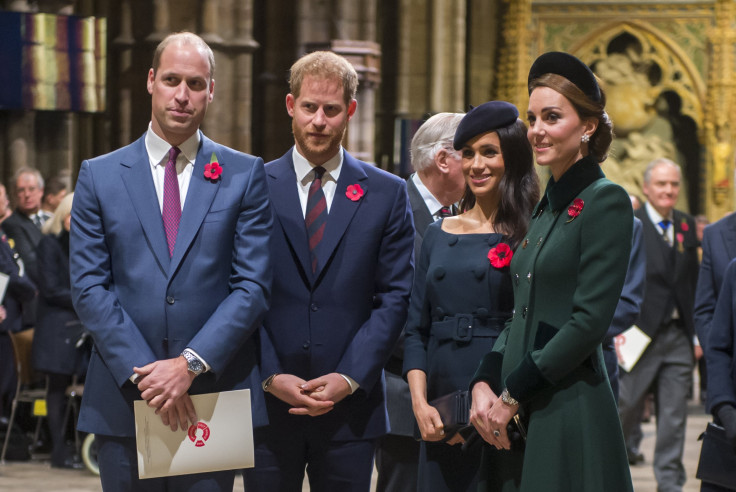
Tiaras, princes and royal weddings — elements of a fairytale taken straight from a children’s book. Nobody would have thought these things exist in real life until reading and hearing about the most famous royalty in the world, the British royal family.
Why are people so drawn to the royal family, particularly the British royal family? In psychological level, it is comforting to hear princes and princesses as it brings back childhood memories of parents reading fairytales to their children before going to sleep. It is simply comforting.
The royal family is also captivating to watch as their lives mirror spectacle and extravagance, very similar to fairytale stories. Watching and reading about the royal family somehow fulfills girls’ princess dreams.
In addition, the royal family is entertaining. The royal family is living a real life, a life set against a soap opera plot that offers a little bit of drama, scandal and love. The characters of the royal family are bounded by rules and traditions that limit them from being fully themselves. These rules range from a simple opening of a door to wedding traditions and such.
For instance, Kate Middleton’s blowing up skirt and Meghan Markle’s failure to comply with wearing tights created stir, not only among the royal family members but also among their subjects and observers. The two princesses became subjects of criticism and intense scrutiny for overlooking those simple protocols.
Here is a list of other royal traditions, protocols and rules that one may find fascinating, odd, weird or ridiculous in an everyday context.
1. Playing Monopoly is prohibited
The royal family is groomed and trained to be the best in all possible aspects of life. This is why Monopoly is banned in the royal household. Prince Andrew was once handed a Monopoly as a gift from Leeds Building Society but did not accept it. “We’re not allowed to play Monopoly at home,” he simply said. “It gets too vicious,” he added.
2. Queen Elizabeth observes swan upping
Queen Elizabeth still practices centuries-old tradition of swan upping. This is a system of marking mute swans for the Queen’s ownership, commonly for consumption. Long time ago, swan meat is considered to be a delicacy, which represents wealth, and is served at royal banquets. At present, the Queen respects the tradition of swan upping for conservation purposes.
3. Ravens are always kept in the Tower of London
In 1660s, King Charles II ordered that at least six ravens must be kept in the Tower of London. It was a belief that ravens protect the royalty and the tower. The saying was “if the Tower of London ravens are lost or fly away, the Crown will fall and Britain with it.”
At present times, ravens and soldiers co-exist and watch the tower together. Similar to soldiers, ravens can be fired and removed from the tower for misbehaving and “poor conduct.”
4. They have a specific standard for tiaras
Kate’s and Meghan’s princess statuses were sealed during their wedding days with a tiara. But these tiaras are created according to standards. That is why they look alike. The tiara has to be at a 45-degree angle when viewed from the side and must be worn during the bride’s wedding day. Another tradition involving tiaras is that it can only be worn upon marrying or by a married woman as it symbolizes loss of innocence to love.
5. Order of precedence is followed in seating and processions
Everything in the royal family involves order and ranking. Every time the royal family attends events and ceremonies, the order of precedence is followed in processions and seating. The order would be Queen Elizabeth II; the Duke of Edinburgh Prince Philip, Her Majesty’s husband; the Prince of Wales and the Duke of Cornwall Prince Charles and his wife, Duchess of Cornwall Camilla Parker-Bowles; the Duke and Duchess of Cambridge Prince William and Kate Middleton; and so on.
6. Table napkins are held in a specific way
Members are required to hold their napkins in a specific way when at a dinner table. The rule is to fold the napkin in half and use the inside part of the napkin when they need it to wipe their mouths. It is to avoid smearing their clothes.
7. The Queen sets the eating pace
Once the Queen is done with her food, everyone is expected to stop, whether they are done eating or not. Some also say that the Queen also dictates the sleeping time of all the people staying inside her house. If the Queen decides to sleep, everyone should sleep too.
8. The Queen sets the conversation during meals
It is always the Queen who has the final say, but in this case, the first say too. It is customary for the Queen to be the first one to start a conversation, usually with the person on her right. For the second course of the meal, the Queen strikes a conversation with the person seating on her left.
9. The Queen is the first to leave the conversation
No one is allowed to leave and turn their back on the Queen after a conversation. The Queen has to leave first. The same goes with royal events. Guests are not allowed to leave before a royal.
10. They weigh in after Christmas dinner
To ensure that everyone enjoyed the Christmas feast, royal family members weigh in before and after the Christmas dinner. The tradition started with King Edward VII, who wanted to make sure his guests ate well by comparing their weights before and after dining with him.
(Read Part II here.)
© 2025 Latin Times. All rights reserved. Do not reproduce without permission.




